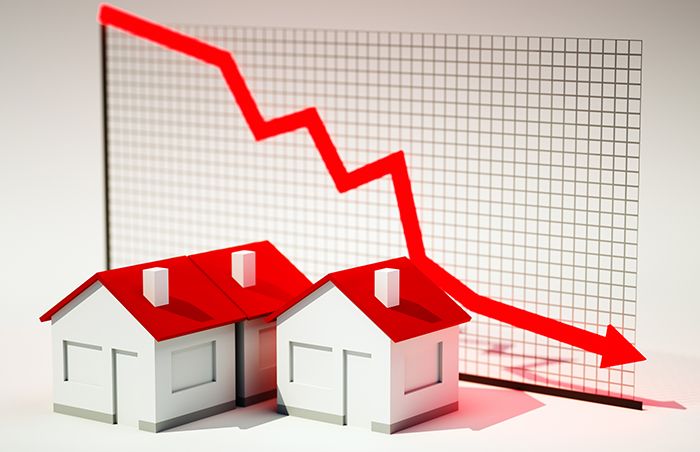
Annual house price growth slowed slightly in May to 2.4 per cent from 2.6 per cent the previous month, according to the latest Nationwide Building Society house price index.
The average seasonally adjusted price was £213,618 in May up marginally from £213,000 in April and from £208,711 in May last year, the figures show.
The average house price fell by 0.2 per cent month-on-month £212,580 to £212,222 (on a non-seasonally adjusted basis).
Nationwide chief economist Robert Gardner says house price growth has remained in a narrow range of between 2 and 3 per cent over the past year which points to little change in supply and demand. He does not foresee much change in the short-term.
Gardner says: “Looking further ahead, much will depend on how broader economic conditions evolve, especially in the labour market, but also with respect to interest rates.
“Subdued economic activity and ongoing pressure on household budgets is likely to continue to exert a modest drag on housing market activity and house price growth this year, though borrowing costs are likely to remain low.
“Overall, we continue to expect house prices to rise by around 1 per cent over the course of 2018.”
Gardner highlights data from the Ministry of Housing, Communities and Local Government, which shows that, over the last 20 years, the total housing stock in England has increased from 20.6 million to 24 million dwellings, a rise of 16 per cent.
He says that the most striking shift has been in the proportion of the stock owned by private landlords.
While last year’s data showed a small decline in the stock of privately rented dwellings, they still account for 20 per cent of the total stock, double the proportion in 1997.
The counterpart of this shift has been a decline in the proportion of homeowners (from 68 per cent to 63 per cent) and social landlords (from 22 per cent to 17 per cent).
Gardner points to some interesting trends in the mix of properties that make up UK housing stock.
He says: “The most eye-catching development is the increase in the proportion of flats, which are popular with investors (circa 60 per cent of flats are privately rented versus 18 per cent of other property types in the privately-owned stock).
“Since 1996, flats have increased from 12.2 per cent to 15.6 per cent of the privately-owned stock.“Flats accounted for a relatively high share of newly constructed dwellings.
“During the period 2005 to 2008 nearly half of new completions in England were flats. While construction has shifted back towards houses in recent years, flats still accounted for circa 20 per cent of new units last year, above their share of the stock.
“It is interesting to note that since 1996, the proportion of rented flats within the stock has increased from 4.9 per cent to 9.2 per cent of private dwellings (equivalent to one million additional units). There has also been a substantial increase in both the number and proportion of privately rented terraced houses, which now represent 8.9 per cent of the stock.
“Over the same period, the number of owner occupied terraces has actually fallen, suggesting some of these properties transferred across to the rental sector.
“The property type which has become much less prevalent is bungalows, which now make up 8.6 per cent of the stock, down from 10.7 per cent in 1996.”
North London estate agent and former Royal Institution of Chartered Surveyors residential chairman Jeremy Leaf says: “Once again, we are seeing few signs of major change in the market after the last few months of up a bit, down a bit – and May is no different.
“On the ground we are seeing much the same – more interest in an increased number of properties coming onto the market which we would expect at this time of the year but still hard to generate commitment from buyers and transactions agreed taking longer to finalise.
He adds: “Looking forward we do expect a little more activity in what is generally the peak time of the year for buying and selling. But once again it is the realistic who are proving the most successful.
“Recent tax and regulatory changes have meant that the playing field between buy-to-let investors and first-time buyers is levelling but to date ding criteria and deposit-raising difficulties are preventing many first-time buyers taking their place in sufficient numbers to make a real difference, despite stamp duty abolition.”






